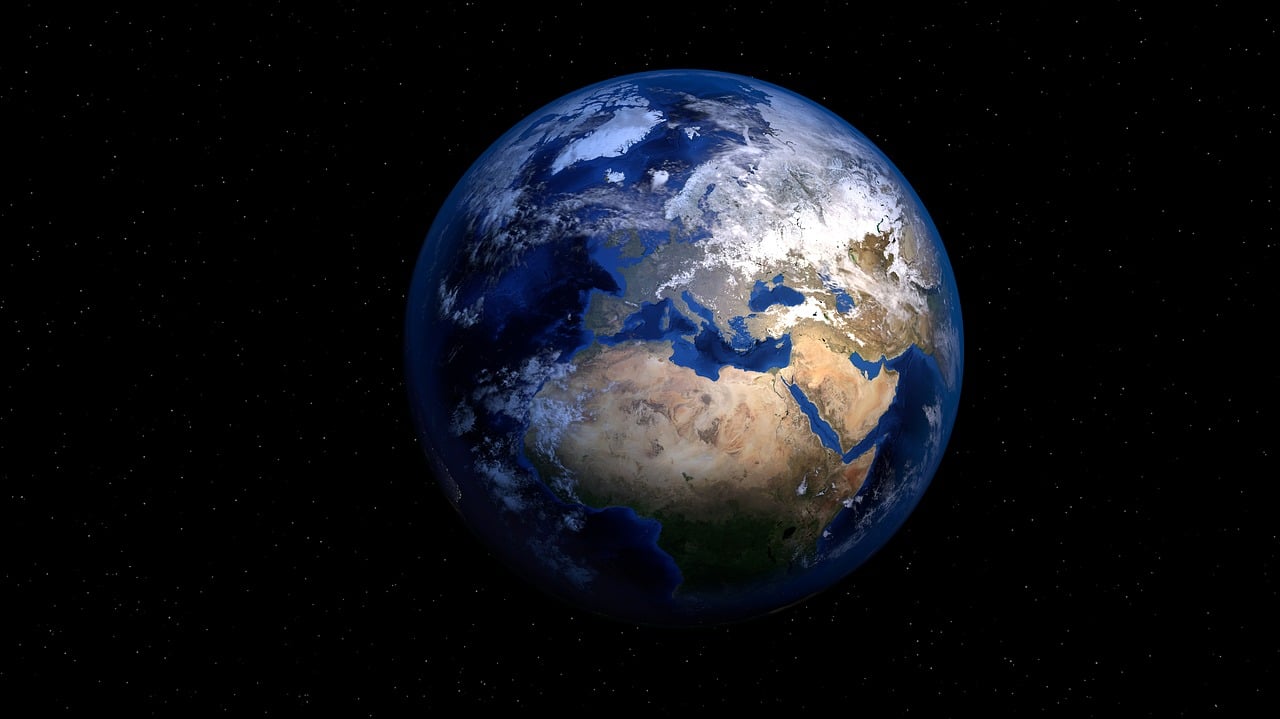Scientists are trying to figure out why Earth wobbles as it spins around its axis. In the 20th century, our planet’s spinning axis drifted by roughly ten meters. Scientists discovered that based on the movement of stars in the night sky. In a new study, scientists have now revealed the three main reasons behind Earth’s strange movement. Unfortunately, one of those factors is our fault.
Contrary to popular belief, Earth is not a perfect sphere, but an oblate spheroid that is slightly flattened at its poles. The diameter from pole to pole is smaller than the diameter at the equator.
Our planet has a unique geology. While most of the planet is covered by oceans, some parts are covered by large mountains. That distributes the planet’s weight unevenly, which is why Earth wobbles as it spins. The axis drifts by four inches every year based on measurements made in the 20th century.
Scientists have thought the main culprit of the Earth’s wobble is glacial or isostatic rebound. When glaciers retreat, they uncover the ground underneath. This event is a slow process which has been happening since the end of the last major ice age, which scientists believe occurred about 16,000 years ago. Back then, large parts of the northern hemisphere were covered by glaciers.
Researchers from NASA’s Jet Propulsion Laboratory discovered that glacial rebound contributes only about 1.3 inches of the axis wobble per year, so scientists wanted to figure out what causes the other 2.7 inches. They used data from the changes in land ice and ocean waters during the 20th century to build a computer model of Earth’s axis spin. They also took other factors into consideration, like groundwater depletion and artificial reservoirs.
Based on those results, another reason Earth wobbles as it spins is related to the melting of Greenland’s ice sheet. NASA estimated that 7,500 gigatons of Greenland’s ice went into the ocean upon melting in the 20th century. The ice sheet initially melted due to the carbon dioxide and other greenhouse gas emissions into the atmosphere, which is directly linked to human activity.
Finally, the planet’s mantle is in motion constantly, which pushes hotter material like magma closer to the core. This sort of vertical motion also causes plate tectonics, volcanism and earthquakes.
Nevertheless, NASA scientists write in their study that there is no reason to worry that the Earth wobbles as it spins, as nothing bad should come of it, nor will it affect the climate. The study’s findings, which were published in the journal Earth and Planetary Science Letters, are of great importance because scientists can use them to study the planet’s climate.
“The traditional explanation is that one process, glacial rebound, is responsible for this motion of Earth’s spin axis. But recently, many researchers have speculated that other processes could have potentially large effects on it as well,” lead author Surendra Adhikari of NASA’s Jet Propulsion Laboratory said in a statement. “We assembled models for a suite of processes that are thought to be important for driving the motion of the spin axis. We identified not one but three sets of processes that are crucial — and melting of the global cryosphere (especially Greenland) over the course of the 20th century is one of them.”





